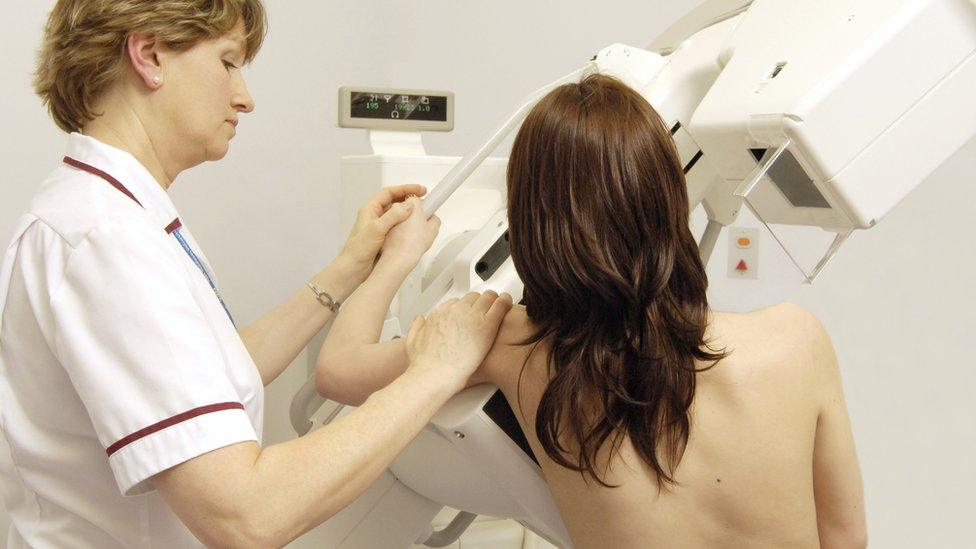'High' survival for many cancers diagnosed at stages 1-3
- Published

A radiographer getting a woman ready for a mammogram or breast X-ray
Adults diagnosed with stage-1 skin, prostate or breast cancer have the same chance of still being alive a year later as the general population, data from the Office for National Statistics and Public Health England suggests.
For many cancers, one-year survival rates are high if they are diagnosed in stages 1-3, but lower in stage 4.
Pancreatic cancer has the lowest rates of survival, for men and women.
are based on cancer diagnoses in England from 2012-16.
Sarah Caul, head of cancer analysis at the ONS, said this was the first time it had looked at five-year survival rates based on what stage the disease was at when diagnosed.
"This research shows a mixed picture but does stress the need for awareness and early diagnosis," she said.
Late-stage drop
Among women diagnosed with breast cancer, the most common cancer in women, 90% will survive for a year unless they are diagnosed at stage 4, when the figure drops to 66%.
In men with prostate cancer, survival rates a year after diagnosis are very nearly 100% for stages 1-3, dropping to 87.6% for stage-4 diagnosis.
However, five-year survival rates for both cancers fall away more steeply if diagnosis was made at stage 3 or later.
For stage 1-4 diagnoses, skin cancer (melanoma) has the highest one-year survival rate, of 97.4% for men and 98.6% for women, and pancreatic cancer has the lowest, at 23.7% and 25.3%.
And 10-year survival rates are highest for skin cancer and lowest for lung cancer - for both men and women.
Most lung cancers are diagnosed at a late stage, probably because symptoms tend not to appear until the cancer is more developed.
European comparison
Overall, data shows cancer survival in England has been improving steadily since 2006.
But the rates are still lower than similar countries in Europe and around the world, recent studies suggest.
The differences in survival are thought to be down to lower numbers of cases being diagnosed early in England.
Cancer survival figures are also published by the Northern Ireland Cancer Registry, the Scottish Cancer Registry and the Welsh Cancer Intelligence and Surveillance Unit.
'More equipment'
Ruth Thorlby, assistant director of policy at think tank the Health Foundation, said improving cancer survival figures reflected sustained investment over the past two decades.
But she said more had to be done if the prime minister's plan to improve survival through earlier diagnosis was to be achieved.
She said it would require "capital investment for additional diagnostic equipment, such as MRI and CT scanners, significant increases in the cancer workforce to diagnose, treat and support cancer patients, and help for staff to improve complex services and get the most out of new advances in cancer care".
- Published17 January 2019
- Published27 November 2018